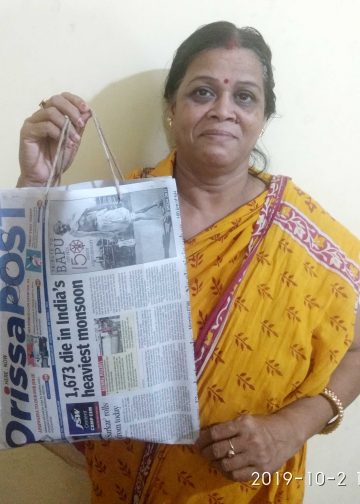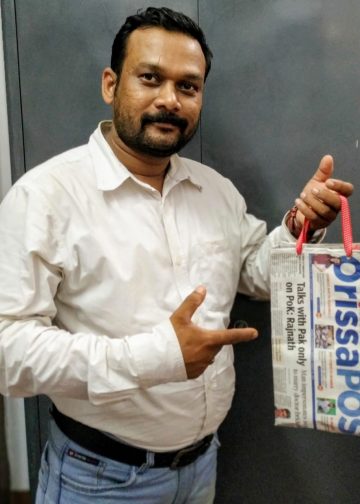dipchand bihari
post news network
Bhubaneswar, Sept 1: Vehicle users in the city appear to be environmentally conscious, going by the number (conservative estimate) of vehicles opting for and clearing pollution tests at mobile units. Orissa State Pollution Control Board (OSPCB) had February 1 launched pollution testing vans to operate within the city.
Today, there are 15 of these vehicles fitted with auto exhaust or multi gas analysers, which measure the volume of harmful gases, carbon monoxide and hydrocarbons from automobile exhaust, operating in the city. It is a paid service ranging in fee from Rs60 for motorcycles to Rs150 for goods carriers.
Orissa POST spoke with eight of these van operators — at RTO Colony, Nayapalli, Jaydev Vihar, Kalinga Hospital Square, Kalpana Square, Saileshri Vihar, Baramunda and Acharya Vihar — and found that each van has, since start of operations in February, tested more than 2,000 vehicles — four-wheelers and two-wheelers included. And in each van the number of vehicles failing the test varied.
A few centres reported that close to 50 per cent of the vehicles failed the test but the failure percentage was negligible at others. The number of people opting for the paid service indirectly indicates awareness about pollution control and the willingness of people to take remedial measures.
Batakrushna Sethy, in-charge of the pollution control vehicle near Nayapalli, said: “About 60 vehicles come to us to get tested each day. Most people who visit us are conscious about the environment but some are really not bothered. They only want the certificate.”
The operator of the van near Kalpana Square said the vehicle had tested 2,560 vehicles since February.
Aditya Nanda Patra, in-charge of Jaydev Vihar pollution testing vehicle, explained the standards that a vehicle needed to maintain to clear the test. “If the exhaust contains less than 0.5 per cent of carbon monoxide and 750 gram/mile of hydrocarbons, the vehicle is cleared as pollution free. Vehicles emitting anything above these limits are not issued certificates. The owners of these vehicles are advised to get the engine oil changed or to get their vehicles serviced.”
The certificates issued by the testing vans are valid for six months and it is one of the essential documents that need to be produced during checks.
People are generally aware of the vans and visit these regularly to get their vehicles inspected. “We have three motorcycles. When I came to know about this van, I immediately checked vehicles. I was told to change the engine oil one of these two-wheelers,” Rakesh Mahanandia, a resident of Patia, said.
Saroj Mohapatra, who had brought his car in for a check, thinks the intiative would be more effective if it would were provided as a free service.
OSPCB had taken the initiative considering the rise in air pollution as a result of increase in number of vehicles in the city. According to 2014 data provided by RTO, Bhubaneswar, the number of vehicles in the city has increased three-fold over ten years.
The total number of vehicles in the city rose from 3,07,126 in 2004 to 9,76,995 in 2014. A more detailed break-up shows that two-wheelers rose from 2,46,244 in 2004 to 7,41,386 in 2014; cars from 22,244 to 1,10,788; goods carriers from 9,556 to 39,758; buses from 1,586 to 3,151; taxis from 6,236 to 18,174; jeeps from 4,816 to 12,384; autorickshaws from 8,390 to 27,943; and tractors from 5,159 to 14,988.






































